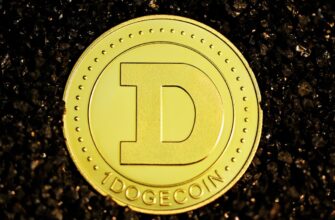## What Are Cryptocurrency Pyramid Schemes?
Cryptocurrency pyramid schemes are fraudulent investment models disguised as legitimate crypto opportunities. Unlike genuine blockchain projects, these scams prioritize recruiting new members over actual product value. Participants are promised high returns for bringing in more investors, creating a unsustainable structure where early entrants profit at the expense of later victims. When recruitment stalls, the pyramid collapses – causing devastating financial losses for most participants.
## How Cryptocurrency Pyramid Schemes Operate
These scams follow a predictable pattern:
1. **Enticing Promises**: Scammers guarantee unrealistic returns (e.g., “Double your BTC in 30 days!”) with minimal risk.
2. **Recruitment Focus**: Earnings depend primarily on enrolling others, not product sales or market performance.
3. **Fake Credibility**: Use fabricated testimonials, fake celebrity endorsements, and complex jargon to appear legitimate.
4. **Artificial Scarcity**: Create urgency with “limited-time” enrollment periods.
5. **Obfuscation**: Avoid clear explanations about revenue sources or blockchain utility.
## 7 Red Flags of a Crypto Pyramid Scheme
Protect yourself by watching for these warning signs:
– ❓ **Recruitment Over Product**: More emphasis on referring others than the actual crypto asset
– ⚠ **Guaranteed Returns**: No legitimate investment offers risk-free profits
– ⏱ **Pressure Tactics**: Urgent deadlines to “join before the price increases”
– 📈 **Exponential Growth Claims**: Promises like “earn 1% daily forever”
– 🔍 **Vague Whitepapers**: No technical details or roadmap for the cryptocurrency
– 💰 **Withdrawal Issues**: Difficulty accessing funds or hidden fees
– 📢 **Anonymous Teams**: No verifiable information about founders
## Pyramid Schemes vs. Legitimate Crypto Projects
Distinguishing scams from real innovations is critical:
| Feature | Pyramid Scheme | Legitimate Crypto Project |
|——————|——————————|———————————|
| **Revenue Source** | New investor deposits | Product utility / market growth |
| **Transparency** | Anonymous teams, no audits | Public team, third-party audits |
| **Tokenomics** | Focus on recruitment rewards | Clear use cases for the token |
| **Sustainability**| Collapses when recruitment slows | Grows with adoption |
## Real-World Examples of Crypto Pyramid Collapses
Historical cases highlight the dangers:
1. **BitConnect (2017)**: Promised 40% monthly returns via a “trading bot,” collapsed after regulatory scrutiny, wiping out $3.5 billion.
2. **OneCoin (2014-2019)**: Marketed as “Bitcoin killer” with no blockchain, scammed $4 billion globally.
3. **GainBitcoin (2017)**: Indian scheme promising 10% monthly interest via Bitcoin mining, led to $300M+ losses.
## How to Protect Your Investments
Follow these safeguards:
– 🔎 **Verify Teams**: Research founders’ credentials on LinkedIn
– 📜 **Read Whitepapers**: Legitimate projects detail technology and token distribution
– 📊 **Check Audits**: Look for smart contract audits by firms like CertiK
– 📃 **Avoid Recruitment Bonuses**: Steer clear of programs paying for referrals
– 🛠️ **Use Regulated Exchanges**: Platforms like Coinbase undergo strict compliance checks
## Conclusion: Stay Vigilant in the Crypto Space
Cryptocurrency pyramid schemes exploit enthusiasm for digital assets, but awareness is your best defense. Always prioritize projects with transparent teams, real-world utility, and sustainable economics. Remember: if returns seem too good to be true, they almost certainly are. Conduct thorough due diligence before investing in any crypto opportunity.
## Frequently Asked Questions (FAQ)
### Are all multi-level marketing (MLM) crypto projects pyramids?
Not necessarily, but most are high-risk. Legitimate MLMs focus on product sales, not recruitment. If over 50% of rewards come from enrolling others, it’s likely a pyramid.
### Can pyramid schemes use real cryptocurrencies?
Yes. Scammers sometimes use established coins like Bitcoin or Ethereum to appear credible, but the investment structure remains fraudulent.
### How do regulators identify crypto pyramid schemes?
Authorities like the SEC examine:
– Whether profits derive primarily from recruitment
– If returns are mathematically unsustainable
– Existence of real products/services
– Transparency of operations
### What should I do if I’ve invested in a suspected pyramid?
1. Cease further investments
2. Document all transactions
3. Report to authorities (FTC, SEC, or local regulators)
4. Consult a financial fraud attorney
### Are decentralized finance (DeFi) projects safer?
Not inherently. DeFi’s anonymity enables “rug pulls” and pyramid-like tokenomics. Always audit smart contracts and review token distribution models.







